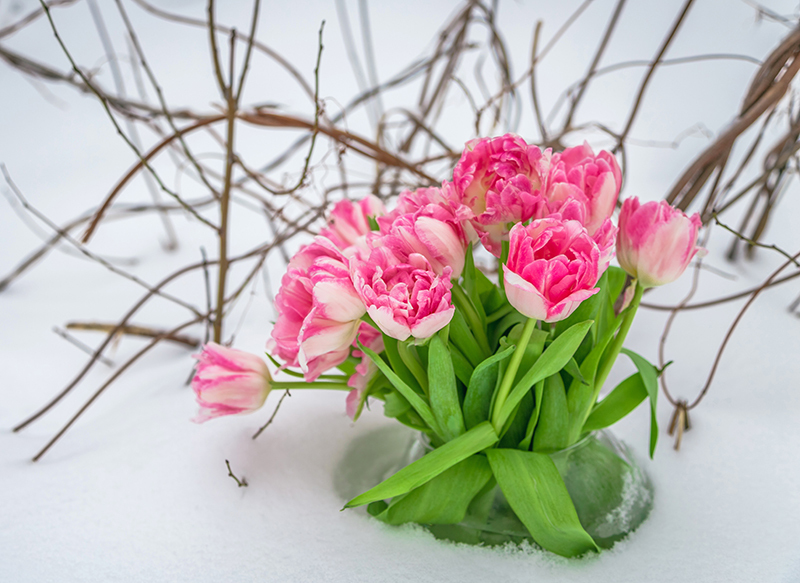Master Tips for Maintaining the Vividness of Cut Blooms
Posted on 02/07/2025
Master Tips for Maintaining the Vividness of Cut Blooms
Flowers are natural mood enhancers, infusing homes and workplaces with color, freshness, and delightful fragrance. Yet, after bringing those gorgeous cut flowers home, their vibrant appearance often fades before we're ready to see them go. Have you ever wondered how to keep cut blooms looking fresh and vivid for longer? This comprehensive guide shares expert tips and proven methods for extending the brilliance of your cut flowers--ensuring your bouquets remain as radiant and lively as the day you arranged them!

Understanding Cut Flowers: Why Do They Lose Vividness?
It's essential first to understand why cut flowers tend to wilt and lose their radiant charm. Once a flower is cut from its plant, it loses its main source of water and nutrients. As a result:
- Dehydration sets in quickly, causing petals to droop.
- Bacteria and fungi multiply in vase water, clogging stems.
- Lack of nutrients prevents blooms from staying vivid and perky.
- Improper environmental conditions (such as heat or draft) accelerate fading.
Top Strategies for Maintaining the Vividness of Cut Blooms
1. Choose the Freshest Flowers
Your efforts to maintain cut flower freshness start at the source. Whether purchasing from a florist or picking blooms from your garden, select flowers that:
- Are just beginning to open (avoid fully open blooms for longer life).
- Have firm stems and vibrant, spot-free petals.
- No signs of wilting or browning at the edges.
2. Cut the Stems Properly
Cutting techniques matter! Use a sharp, clean pair of scissors or floral shears--never dull blades, which crush the stem and impede water uptake.
- Trim stems at a 45-degree angle under running lukewarm water. This maximizes surface area and prevents air from entering the stem and blocking water flow.
- Remove any leaves that would sit below the waterline to prevent rot and bacterial growth.
3. Use Clean Vases and Fresh Water
Bacteria are the arch-enemies of vivid blooms. Always use a spotlessly clean vase--any residue can promote microbial growth that causes premature wilting and petal fading.
- Rinse vases with hot, soapy water and a tiny splash of bleach before use.
- Fill the vase with tepid, dechlorinated water--cold water can shock delicate blooms.
4. Feed Your Flowers: The Right Flower Preservative
Most florists provide sachets of flower preservative; don't skip this step! Flower food typically contains:
- Sugar (for energy and blossom longevity)
- Biocide (to control bacteria and keep stems clear)
- Acidifier (to maintain proper water pH for nutrient absorption)
5. Optimal Placement: Avoid Direct Sunlight and Heat
Strong light and heat sap moisture from blooms and speed up deterioration. When displaying your arrangement:
- Keep out of direct sunlight, especially during the warmer months.
- Avoid placing arrangements near appliances, radiators, or heating vents, as well as on top of electronics.
- Keep away from drafts and fruit bowls (as ripening fruit emits ethylene gas, which ages flowers rapidly).
6. Daily Maintenance: Pruning and Petal Care
A little daily maintenance ensures lasting vibrance:
- Remove fading petals and dried leaves promptly--they invite rot and spoil the whole arrangement.
- If a stem looks mushy, pull it out, re-cut the base, and return it to clean, fresh water.
- Gently mist delicate blooms with water to keep petals hydrated (ideal for hydrangeas, roses, and peonies).
Specialized Tips for Different Types of Cut Flowers
Certain blooms have unique needs when it comes to preserving their vividness. Below are tailored tips for some of the most popular cut flowers:
Roses
- Remove the outermost petals ("guard petals") for a fresher look.
- Submerge wilted rose heads in a bowl of lukewarm water for 30 minutes to revive them.
Tulips
- Keep stems upright by wrapping in paper for an hour before arranging.
- Don't use flower food with tulips; just cold, fresh water works best.
Hydrangeas
- Split the stem base vertically to improve water intake.
- Mist petals daily to prevent drooping and preserve vibrancy.
Sunflowers
- Change water daily to avoid their fast bacterial growth.
- Recut stems under water every other day for best results.
Lilies
- Remove pollen sacs (anthers) to prevent staining and petal deterioration.
- Keep away from sunny windows to preserve color intensity.
DIY Solutions: Homemade Hacks for Preserving Cut Blooms
The internet is filled with creative home remedies for extending the life and vividness of cut flowers. Here are a few tested, effective hacks you can try:
- Add a copper penny and aspirin to the vase water to slow bacteria and provide nutrients.
- Use a splash of lemon-lime soda (not diet) to feed flowers sugar and acidify the water.
- Add a drop of bleach to deter bacterial growth--just don't overdo it!
- Crushed vitamin C tablets can also help keep flowers vivid and refreshed.
Common Mistakes That Fade Cut Blooms (and How to Avoid Them)
Even well-intended floral enthusiasts make these common mistakes:
- Using dirty water or a vase--this hastens decay and dulls petal color.
- Neglecting to recut stems, so flowers can't absorb water easily.
- Leaving leaves submerged, which decays and encourages growth of odor-causing bacteria.
- Placing flowers near heat or drafts, which saps moisture fast.
- Adding too much commercial flower food, which can actually damage petals.

Expert Insights: Frequently Asked Questions
How long can I expect my cut flowers to remain vivid and fresh?
With diligent care, most cut blooms can stay lively for 7-10 days, while hardier varieties (like chrysanthemums and carnations) may last up to two weeks. Proper water changes, cutting, and placement are crucial to extending their vivid period.
Are there any flowers that naturally last longer as cut blooms?
Yes! Chrysanthemums, alstroemeria, carnations, orchids, and lilies are renowned for their long vase life. Opt for these if you want reliable, long-lasting color in your home or office.
Why do my flowers sometimes turn slimy or develop an odor quickly?
This is usually due to stagnant water and high bacterial growth. Always keep your vase clean, change the water often, and remove any organic matter below the water line to prevent slime and unpleasant odors.
Can I revive flowers that have already wilted?
Sometimes! Re-cut stems under running water and refresh the water (add floral food if possible). Submerging wilted blooms fully in cool water for 30 minutes can also help--just be gentle with delicate petals.
Conclusion: Enjoy Longer-Lasting, Vivid Cut Blooms
In summary, maintaining the vividness of cut blooms is both an art and a science. Start with the freshest flowers, use proper cutting techniques, maintain water quality, feed with preservatives, and choose the best spots in your home for display. With these master tips, your bouquets will remain a focal point--bursting with color and life--for as long as possible.
Whether you're arranging a bouquet for a special celebration or simply enjoying the beauty of fresh flowers, these master tips ensure your cut blooms retain their striking vibrancy. Take time to care for your flowers, and they, in turn, will grace your living space with unmatched vividness and charm!
Share Your Favorite Flower-Care Tips!
Do you have a unique method for keeping cut blooms fresh and colorful? Share your secrets and experiences in the comments below. Let's continue celebrating the beauty of flowers--together!
Latest Posts
Office Zen: Best Low Maintenance Plant Picks for Easy Care
The Charismatic Peony: Symbolism and Colour Stories
Nurture Your Orchids with Careful Attention





